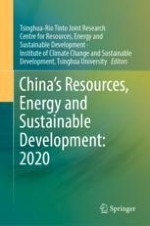This book explores sustainable development from the perspective of resources and energy, based on China’s practical experience and cross-disciplinary research. It focuses on major challenges, key solutions and policy recommendations, and studies and explores seven important themes of resources, energy and sustainable development, including: 1) China’s low-carbon energy transition, 2) China’s urbanization and low-carbon development, 3) China’s low-carbon action in cities, 4) China’s low-carbon power transition, 5) China’s water resources management, 6) electric vehicle development and key metal resources and 7) China’s low-carbon development of the iron & steel industry. This book contributes to a more integrated understanding of many themes and their relationships in the area of resources, energy and sustainable development and guides the related policy and management.
